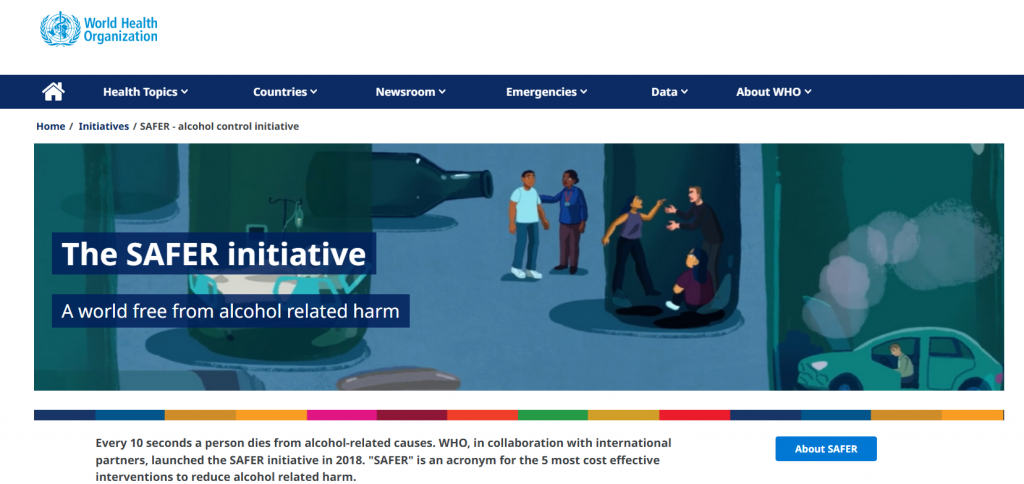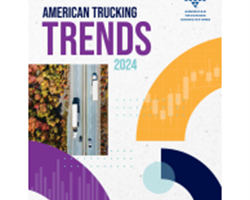WHO global alcohol action plan updated. “Who” will take an initiative for DUI in Japan?
2024.10.27
Policy making of ” alcohol related problem” has been led by 厚生労働省 in Japan.
https://www.mhlw.go.jp/stf/seisakunitsuite/bunya/0000176279.html
Basic act of Alcohl related problem,including drunk-driving had been set up in Japan as ” アルコール健康障害対策基本法” in 2014.
Officialy named in English ” Basic Act on Measures against Alcohol-related Harm (Act No. 109 of 2013).
WHO is now suggestioning
In June 2024 WHO made up “Global alcohol action plan 2022-2030”
We can see that WHO is scoping for drunk-driving issues as below
The actions and measures proposed in the action plan are envisaged to support and complement policy measures and interventions implemented at the national level in the following 10 areas Global alcohol action plan 2022–2030 recommended in paragraph 16 of the global strategy:
(1) leadership, awareness and commitment;
(2) health services’ response;
(3) community action;
(4) drink–driving policies and countermeasures;
(5) availability of alcohol;
(6) marketing of alcoholic beverages;
(7) pricing policies;
(8) reducing the negative consequences of drinking and alcohol intoxication;
(9) reducing the public health impact of illicit alcohol and informally produced alcohol; and (10) monitoring and surveillance
For this 10 areas , The strategy was named ” SAFER” and Special campaign page is maintained as below

Core object that could be theme up
- Alcohol availability
- Drink-driving
- Brief interventions and treatment
- Alcohol advertising
To achieve above target to be clear strong initiative named “SAFER” had started with campaing pages.
- Strengthen restrictions on alcohol availability
- Advance and enforce drink driving counter measures
- Facilitate access to screening, brief interventions and treatment
- Enforce bans or comprehensive restrictions on alcohol advertising, sponsorship, and promotion
- Raise prices on alcohol through excise taxes and pricing policies
Indicators that shows implimentations to be done are
1.2. By 2030, 70% of countries have introduced, enactedor maintained the implementation of highimpact policy optionsand interventions.
1.2.1 Number of countries (as apercentage of all WHO Member States) that have introduced, enacted or
maintained the implementation of high-impact policy options across the following areas:
(a) affordability of alcoholic beverages;
(b) advertising and marketing of alcoholic beverages;
(c) availability of alcoholic beverages;
(d) drink–driving;
(e) screening and brief interventions for risky patterns of alcohol use and treatment of AUDs.
For decision makers and practitioners
WHO also had been providing tools and knoledges to counrty members, mainly to policy-makers , decision-makers and practitioners related drink driving
Manual document named that
“DRINK DRIVING – A road safety manual for decision-makers and practitioners”
One question for Japanese goverment , body of ” 内閣府 中央交通安全対策会議” and ” 厚生労働省” and “警察庁” and ”国土交通省”
Who is “policy maker” ?
Who is “decision maker”?
Who are ” practitioners”?
In this manual we can find basic pattern of DUI regulation including alcohol ignition interlock
- 2.1 Legislation 17
- 2.2 Licence Restrictions (Effective) 22
- 2.3 Offender Management 22
- 2.4 Public Education 24
- 2.5 Other effective legal measures 28
- 2.6 Engineering countermeasures 30
- 2.7 Post-crash response
Traditional Offender management
For this 20 years , Offender management has not been changed and can say actually ” traditional”
Even an Alcohol ignition interlock seems to be traditional combined with offender program as social system.
2.3 Offender Management
Greater understanding of the factors that contribute to drink driving, together with access to in-vehicle technology, has changed the way offenders (especially recidivists) are managed. Historically, penalties for drink driving offences have commonly included jail sentences, monetary fines, demerit point sanctions, and licence bans (suspension or revocation). However, a licence sanction (e.g. suspension) does not necessarily mean that an offender will cease driving. Additionally, traditional types of penalties did little to support offenders with alcohol dependence issues. As a result, countermeasures such as interlocks, offender programmes, and rehabilitation/treatment programmes have been implemented in various high-income countries in recent decades.
2.3.1 Offender programmes (Promising)
Programmes to educate and deter reoffending differ considerably and can range from an education-only programme to more tailored treatments that include components such as behaviour change training, the use of case management to monitor progress, and referral to specialist help to deal with alcohol dependency (see section 2.3.3 for more detail about alcohol rehabilitation programmes). Some jurisdictions have programmes only for first offenders, others mandate programme completion for all drink driving offenders; while some are only for offenders with mid- or high-range BAC threshold offences or for recidivists. A summary of the wide range of offender programmes used across Australian jurisdictions, for example, can be found in Table 8.1 of an Austroads publication from 2020 (19). Despite the intuitive appeal of many of these programmes, robust evidence about which type of programme offers greatest impact requires further research.
2.3.2 Alcohol ignition interlocks (Effective)
An alcohol ignition interlock (also commonly known as an alcohol interlock device or an alcolock) is an electronic breath-testing device which prevents a vehicle from starting if alcohol (above a designated threshold) is detected in the breath of the driver and then requires breath samples to be provided randomly while the vehicle is being driven. An interlock device generally consists of two parts which: 1) measure breath alcohol concentration, and 2) immobilise the vehicle engine if a pre-programmed BAC limit is exceeded. Interlocks have generally been used as a punitive, rather than a preventative measure, and have aimed to reduce drink driving among two key groups: 1) repeat offenders, and 2) high-range BAC first time offenders. However, in Victoria, Australia, interlocks were introduced in 2018 as a mandatory penalty for anyone apprehended with a BAC level of 0.05 or higher, irrespective of whether they were a first-time or repeat offender. An evaluation of the effectiveness of this sanction in reducing offending and alcohol-related crashes was not available at the time of writing. In some jurisdictions, interlocks are also used as a preventative measure in some occupational settings (e.g., heavy vehicle and bus fleets) The interlock device can store data (e.g., number of attempts to start the vehicle and associated BAC levels during such attempts, as well as attempts to tamper with the device) which can be used by authorities to monitor compliance levels and rehabilitation outcomes. This kind of information is particularly useful in jurisdictions where a violation-free period is needed in order for an offender to be relicensed. Various additional features to help ensure integrity of a device while it is installed in a vehicle are in use or in development and include: face recognition, biometric (fingerprint) recognition, real-time reporting of violations, GPS tracking, and the use of PIN so that multiple users can use a single device. Advances in technology continue to enhance capacity and functionality of interlock devices. For instance, less obtrusive measurement mechanisms include passive options such as skin sensors, transdermal perspiration measurements and alcohol ‘sniffer’ systems (sensors in a vehicle that measure alcohol in the breath at a distance, rather than from a direct breath sample, also known as PAS – passive alcohol sensor technology) that are integrated into the cabin of a vehicle and do not require a driver to provide a direct sample of breath. More information about the various interlock capabilities and programmes throughout Europe and Australasia can be found in a range of publications (20, 21). Additional information about aspects of interlock programmes, including cost, installation, programme duration, and removal requirements, can be found in Tables 2.1 and 2.2 of a 2015 Austroads publication (22).
Interlock evaluation research across many jurisdictions consistently demonstrates that the devices are highly effective in reducing drink driving episodes (and re-arrest rates for alcohol-impaired driving) while installed in the vehicle, but that this positive effect diminishes when the device is removed (23, 24). Information is available on the use and effectiveness of interlocks in Europe (22), the United States of America (25), and Australia (19). It is important to note that interlock programmes can create financial hardship for some offenders because in some jurisdictions, offenders are responsible for paying costs associated with installation and monitoring of interlock devices. A range of financial, judicial and logistical issues should be explored and resolved by relevant authorities before launching a new interlock programme.
2.3.3 Alcohol Rehabilitation Programmes (Effective)
As noted above, interlocks are effective at reducing drink driving while installed in a vehicle. The return to offending, once the device is removed, indicates that for some people, problematic alcohol levels (7). Because of the ease of administration, breath alcohol is more commonly measured in the road safety context. As described in section 1.3, the presence of any amount of alcohol can impair driving behaviour and there is a rapid, exponential increase in risk for BAC levels that exceed 0.05g/dl. Therefore, international evidence and experience demonstrates a critical need to legislate lower maximum BAC rates in order to reach, at least, the WHO recommended minimum requirements to limit the harm caused by alcohol consumption and driving.
Who(not WHO) will lead offender program with alcohol interlock and rehabilitation hybrid program in Japan?
Who(not WHO) will get strong initiative for eliminate DUI ?
-
2025.12.11
Trump administration’s campaign for CDL standard. What is a “Professional driver”?
-
2025.10.11
-
2024.10.18
-
2024.9.20






